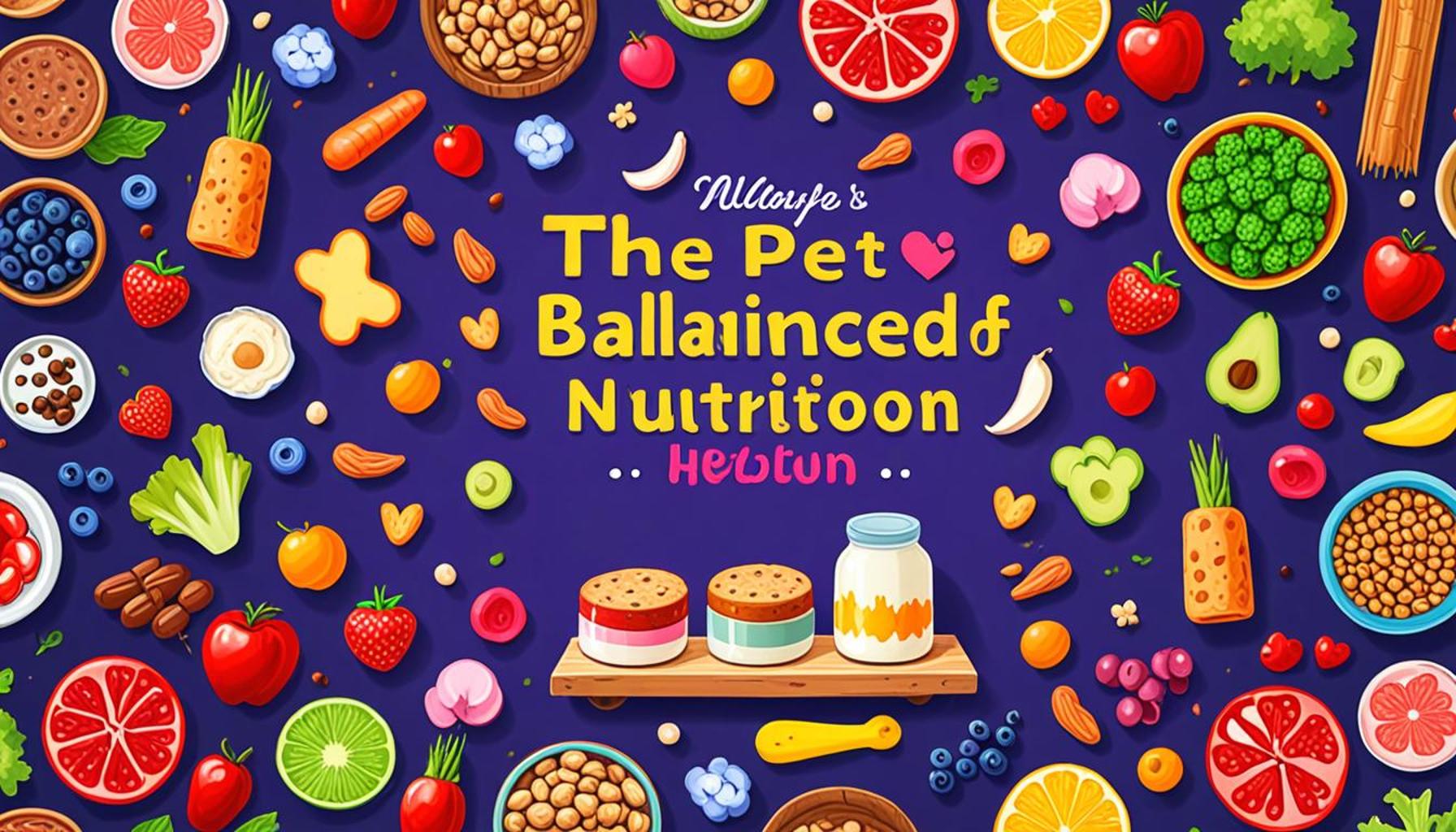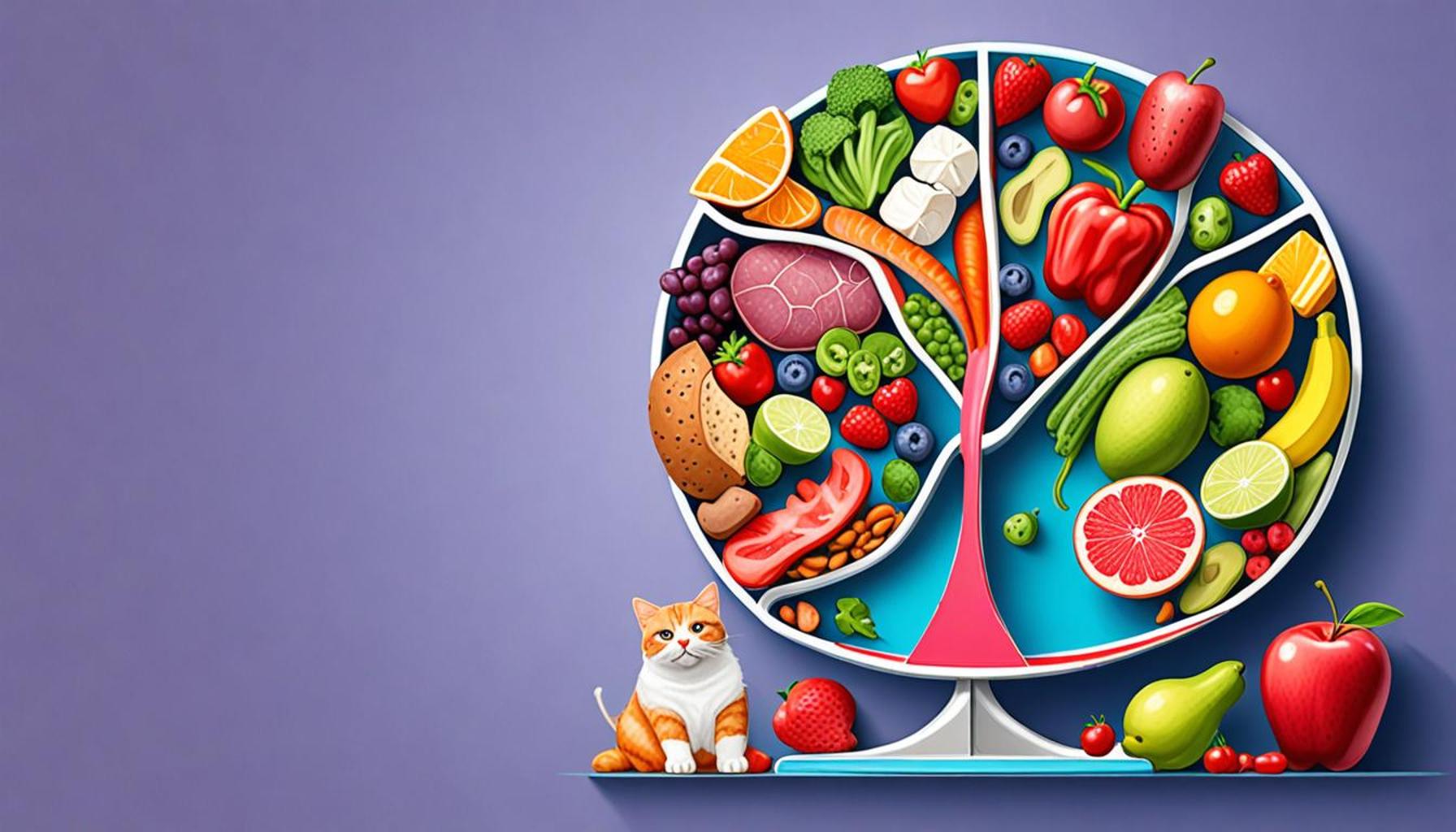The Importance of Fiber in Pet Diets and Its Digestive Effects

Understanding the Importance of Fiber in Pet Diets
It is essential for pet owners to recognize the pivotal role that fiber plays in their pets’ diets. Fiber is not merely a dietary component; it’s a fundamental aspect of maintaining robust digestive health and overall well-being. Despite its importance, many pet owners remain unaware of how fiber contributes to various biological processes, especially digestion. When pets consume the right amount of fiber suited to their dietary needs, they can experience not only enhanced digestion but also a range of health benefits that significantly improve their quality of life.
Consider the following key points regarding fiber in pet nutrition:
- Improved Digestion: Fiber serves as a natural bulking agent that helps to regulate bowel movements. It can minimize gastrointestinal issues, such as constipation or diarrhea, by absorbing water and forming a gel-like substance that facilitates smoother passage of food through the intestines. For instance, pets that are prone to digestive disturbances may benefit greatly from a diet enriched with fiber-rich ingredients like pumpkin or psyllium husk.
- Weight Management: A diet high in fiber can be particularly beneficial for pets battling obesity. Fiber-rich foods tend to be low in calories while simultaneously providing a sense of fullness, leading pets to consume fewer calories overall. For example, incorporating vegetables such as carrots or green beans into a pet’s meals can curb their appetite and promote a healthy weight.
- Reduced Risk of Diseases: Emphasizing adequate fiber intake may lower the risk of various health conditions, such as diabetes or certain types of cancer. Research has shown that a high-fiber diet can help stabilize blood sugar levels, reducing the likelihood of diabetes, particularly in breeds prone to this condition.
It’s important to note that not all fibers are created equal. Different sources of fiber, such as fruits, vegetables, and grains, contribute unique benefits to a pet’s health. For instance, soluble fiber found in oats or apples can assist in cholesterol regulation, while insoluble fiber present in whole grains promotes healthy stool formation and aids in moving food through the digestive tract. Understanding these distinctions will enable pet owners to make informed dietary choices tailored to their pets’ specific needs.
In light of these insights, ensuring a balanced diet rich in fiber is essential for improving pets’ overall quality of life. Pet owners should actively investigate dietary options that incorporate appropriate fibers to unlock the remarkable benefits they can bring, such as heightened digestive health, effective weight management, and reduced disease risk. With a conscious effort to enhance your pet’s diet, you can foster a healthier, happier companion, making the topic of pet nutrition not just essential, but also deeply rewarding.
DIVE DEEPER: Click here to learn more

Fiber: A Vital Component of Pet Digestive Health
When we think of pet nutrition, protein and carbohydrates often take center stage. However, fiber deserves just as much recognition for its crucial role in maintaining healthy digestive systems for our furry companions. The composition of pet food is essential in providing a balanced diet, and fiber, in particular, serves a multitude of purposes that enhance digestive efficacy. Pet owners looking to optimize their pets’ diets should not overlook the importance of including fiber-rich ingredients as part of their everyday meals.
Gut Health and Prebiotics are two essential aspects of digestion significantly influenced by fiber intake. Certain types of fiber, known as prebiotics, act as food for the beneficial bacteria in pets’ intestines. This fermentation process results in the production of short-chain fatty acids, which are vital for maintaining colon health. Incorporating prebiotic-rich foods like chicory root or garlic can immensely contribute to gut flora balance. A healthy gut not only aids digestion but also boosts the immune system, creating a resilient shield against various infections.
Furthermore, fermentable soluble fibers play a significant role in digestive efficiency. These fibers can become viscous when mixed with water, resulting in a gel-like substance that slows down the digestion process and stabilizes blood sugar levels. This characteristic of soluble fiber is particularly beneficial for pets suffering from conditions like diabetes, where maintaining steady glucose levels is crucial. An example of such fiber can be found in oats, which work to moderate the absorption rate of sugars into the bloodstream, ultimately supporting your pet’s overall metabolic health.
Insoluble fiber, on the other hand, is the powerhouse for those seeking to encourage regular bowel movements. This type of fiber adds bulk to the stool, ensuring that waste is pushed efficiently through the gastrointestinal tract. If you’ve ever seen a pet straining to defecate, it may be time to assess their fiber intake. By incorporating insoluble fiber sources such as whole grains or wheat bran, pet owners can help mitigate these uncomfortable experiences for their animals, fostering a smoother digestive process.
- Enhanced stool quality: A well-fibered diet leads to firmer and more consistent stool, making clean-up easier for pet owners.
- Less bloating and gas: Adequate fiber helps regulate gut motility, leading to fewer incidences of discomfort due to gas buildup.
- Healthier weight management: Fiber-rich meals help pets feel satisfied and prevent overeating, an essential factor in maintaining an optimal weight.
Understanding the distinct roles of soluble and insoluble fiber in your pet’s diet can empower owners to make informed decisions to bolster their pet’s health. In the quest to create a balanced, nutritious meal plan, fiber should not merely be an afterthought but a foundational cornerstone. For pets eager to lead active, healthy lives, an investment in their fiber intake can yield significant dividends in terms of digestive harmony and overall vitality.
| Category | Description |
|---|---|
| Digestive Health | Fiber aids in promoting healthy digestion by facilitating smoother bowel movements and preventing constipation in pets. |
| Weight Management | Incorporating fiber into your pet’s diet can help maintain a healthy weight by increasing satiety without adding excessive calories. |
In the realm of animal nutrition, understanding the balance of a diet is essential. In particular, fiber plays a crucial role not only in supporting digestive health but also in weight management. When it comes to pets, digestive health is highly influenced by fiber types and sources. For instance, soluble fibers can help regulate blood sugar levels, while insoluble fibers are more effective in promoting bulk in the stool.Moreover, the benefits of fiber extend beyond digestion—it actively contributes to maintaining a pet’s overall wellness. Foods rich in fiber, including certain fruits, vegetables, and whole grains, can assist in minimizing gastrointestinal issues and even reduce risks associated with pet obesity. By focusing on proper fiber intake, pet owners can significantly optimize their companions’ overall health, shedding light on the profound impact dietary choices have on pets. Incorporating the appropriate amount of fiber not only helps in achieving a balanced diet but can also introduce varied and interesting textures and flavors that make mealtime enjoyable for pets. Understanding these facets will enhance pet care practices, leading to healthier, happier animals.
LEARN MORE: Click here for insights on balanced nutrition for your pets
Balancing Fiber in Your Pet’s Diet
While the importance of fiber in pet diets is clear, understanding the right balance is crucial for ensuring optimal health. Not all pets require the same fiber content in their meals; factors such as age, breed, and health conditions play a significant role in determining individual needs. Therefore, it is essential for pet owners to consider their unique pets’ digestive requirements when selecting fiber sources.
Mixed Fiber Sources are often beneficial in providing a more diverse array of nutrients and supporting gut health. Incorporating a combination of soluble and insoluble fibers can enhance digestive outcomes. For instance, blending fruits like apples—rich in soluble fiber—with vegetables like carrots that are high in insoluble fiber creates a balanced meal. This approach not only aids digestion but also promotes a well-rounded intake of vitamins and minerals essential for your pet’s well-being. Moreover, fruits like blueberries and bananas can double as tasty treats while contributing valuable fiber to their diets.
Additionally, fiber supplements can be an effective way to boost your pet’s fiber intake, especially for those who may not get enough from their regular food. These supplements come in various forms, such as powders and chews, that can easily be mixed into meals. However, it’s crucial to consult with a veterinarian before introducing any supplements to ensure they align with your pet’s dietary needs and health conditions.
Fiber’s Role in Managing Health Conditions
Fiber’s impact goes beyond general digestive health; it can play a pivotal role in the management of various health conditions. For overweight or obese pets, fiber-rich diets can facilitate weight management by increasing satiety. This can help distinguish between genuine hunger and the habit of overeating. Some studies show that high-fiber diets can reduce calorie intake, aiding in weight loss while still maintaining energy levels, which is essential for active interaction.
Moreover, pets suffering from gastrointestinal disorders benefit notably from an increased fiber intake. Conditions such as inflammatory bowel disease (IBD) or chronic diarrhea often require dietary adjustments. Including dietary fiber helps normalize stool consistency and frequency, providing relief. For these pets, focusing on easily digestible fibers, one may consider options like pumpkin or sweet potatoes, both of which are well-tolerated and effective in stabilizing digestive health.
It’s also vital to monitor hydration levels in conjunction with fiber intake. Fiber absorbs water, which is fundamental for it to function effectively in the digestive system. Therefore, ensuring that pets have access to fresh, clean water at all times becomes crucial, especially if they consume higher amounts of fiber-rich food. This practice not only aids fiber’s functionality but also supports overall digestion and kidney health.
Practical Tips for Increasing Fiber
Incorporating fiber into your pet’s diet can be simple and effective. Here are some practical tips to consider:
- Gradually introduce fiber: Sudden changes to fiber levels can upset a pet’s digestive system. Gradually incorporate high-fiber foods over several days.
- Opt for whole foods: Choose whole grains and fresh fruits and vegetables over processed options to maximize fiber content and additional nutrients.
- Read labels carefully: When purchasing commercial pet foods, look for those that list high-quality fiber sources, such as beet pulp or brown rice, among the first ingredients.
The careful selection and balancing of fiber in pets’ diets can lead to remarkable improvements in their digestive health and overall quality of life. Understanding these elements can empower pet owners to make informed choices, promising furry companions healthier, happier lives.
DISCOVER MORE: Click here for essential adoption resources
Conclusion
In conclusion, fiber plays a vital role in the diets of pets and significantly impacts their digestive health. Understanding how to incorporate the right types and amounts of fiber into their meals can provide profound benefits—ranging from improved digestion to effective weight management and enhanced overall well-being. As we’ve explored, a balanced approach that includes both soluble and insoluble fibers from diverse sources not only satisfies their digestive requirements but also boosts their nutrient intake.
For pet owners, being proactive about their pets’ fiber needs is essential. This means regularly consulting with veterinarians to tailor diets that best suit individual health conditions and life stages. As conditions like obesity and gastrointestinal disorders become increasingly common, the importance of fiber remains crucial in managing these challenges. The right fiber choices can support pets as they navigate various health issues, ensuring their comfort and vitality.
Moreover, practical considerations such as introducing fiber gradually and ensuring proper hydration can optimize the benefits of fiber in your pet’s diet. By making informed decisions regarding fiber intake, pet owners can greatly enhance not just their pets’ digestive health, but their quality of life as well. Ultimately, prioritizing fiber in your pet’s diet is not just about nourishing their bodies—it’s about fostering a happier, healthier companionship that will enrich both their lives and yours for years to come.



